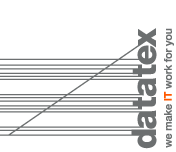
Traceability in the textile supply chain
Interview with Piero De Sabbata
ENG
What are the key elements that contribute to effective traceability? What are the possible goals to be achieved and the main challenges?
I think the three key elements are vision, collaboration and standardization.
Vision, because we need to have a clear vision of what are the immediate and medium-term priority objectives for which we want to implement a traceability system. Do we want to fight counterfeiting? Do we want to engage consumers? Do we want to reduce business risk in terms of sustainability? Depending on the answers we give, the traceability system will take on different characteristics.
Collaboration, because we are primarily talking about a system that involves several business functions, not just an IT solution to be bought or rented, and we are talking about entire supply chains, often multiple ones, that need to come together and adopt common methods, common languages, to collect information that is consistent and usable.
Standardisation, this is the most difficult point to get through in the absence of a specific regulatory framework; we have to collect data in a meaningful, reliable and immutable way from fragmented supply chains; the players in these chains have multiple customers to whom we have to provide this data, then we have to use common standards so as not to multiply the costs that companies face.
What are the benefits of traceability in the textile supply chain, both for the end consumer and for the producers and actors in the supply chain?
Traceability, organised in a transparent and reliable way, has two immediate results: a reduction in the risks faced by the company and an improvement in the trust of the consumer, who is tired of the many “claims” made without any evidence to back them up. For the companies within the supply chain, it is also an opportunity to gain visibility, which is often denied today, and to reward those who perform well.
What is a digital product passport and how does it contribute to traceability? What information should it contain and how could it be effectively implemented?
The Digital Product Passport is a set of data on product characteristics that should always accompany any product placed on the European market, according to the proposed European regulation called ESPR [1], which approval is currently pending in a few months. This information should always be available through a simple identification code.
What kind of data? It is too early to be certain, but we can expect three types of data: a) those necessary to identify the product, its manufacturers (or importers) and production sites; b) those relating to the expected performance of the product (e.g. durability and repairability) and c) those relating to the environmental impact of production.
But here I must use the conditional, as we do not yet know how these characteristics will be implemented in different sectors. To be precise, ‘delegated acts’ will define these aspects for each sector; the first are expected to be issued at the same time as the ESPR is adopted by 2024, and will certainly include textiles.
What are the current or emerging regulations or standards for traceability in the textile supply chain? How do these regulations affect the implementation of traceability systems?
There do not appear to be specific traceability regulations in the pipeline, but companies will be asked to formalize declarations which could be very risky without the implementation of reliable traceability systems.
Certainly, the legislation envisaged by the ESPR will have its weight in defining the scope of these declarations, but not only: in order to implement the strategies that put the objective of circularity and sustainability at the centre, there are several measures in the pipeline at European level (16 of which, according to EURATEX evaluations, have an impact on textile clothing): for example, the legislation on “policy claims” and that on the “due diligence” of large companies would generate important requirements for the collection of supporting information along the entire production chain.
What emerging or existing technologies are revolutionising traceability in the textile supply chain?
In my opinion, there is no ‘silver bullet’. Technologies are widely available and it is a matter of using them in a coherent and organised way.
However, we can mention some that can contribute more than others to effective and cost-effective solutions: Blockchain (to ‘notarise’ information and make it immutable and verifiable; there is probably still room for development and research here), dual RFIDs (which can be used for logistics as well as NFC devices on smartphones) capable of survive the vicissitudes of the use of the physical object to which they are attached, ditto chemical markers (although in this case we are more in the field of combating counterfeiting), zero-knowledge proof technologies and attribute based cryptography to protect information and selectively limit its visibility, just to mention the first that come to mind.
Are there any success stories or pilot projects related to traceability and digital passports?
There are a number of traceability initiatives; we have reported on some of them in the activities of the Made in Italy national cluster (www.clusterminit.it), of which I coordinate the working group on traceability; these initiatives sometimes have the limitation of focusing more on the final phase, from the finished product to the consumer, rather than looking at the upstream phases. Information on these events can be found at https://www.clusterminit.it/eventi/
Other ones are extremely focused on the the raw material certification, with a traceability model aiming to guarantee the raw material in the finished product.
There are no real working solutions on the Digital Product Passport (DPP), for the simple reason that the legislation is not yet defined, there are experiments and prototypes, i.e. many technology providers are trying to position themselves with their current products on the upcoming DPP market with announcements and experiments, but this stops there, for now.
I do not feel like mentioning specific initiatives, except for two ongoing European initiatives in which I have been directly involved in some way: the TRICK project (www.trick-project. eu), which aims to test a data collection model for traceability to support the circular economy in the production of clothing (two pilot projects, one for technical clothing -Gruppo Grassi- and one for high-end classic clothing -Lanificio Piacenza-); the interesting aspect of TRICK is the desire to integrate, in a common model, the collection of traceability data with those needed to evaluate different types of sustainability -PEF, SA 8000,… – and the application of preferential customs tariffs, based on an extension of the eBIZ specification (ebiz-tcf.eu), compatible with GS1 EPCIS and the similar UN/CEFACT specification (www.ebiz.enea.it). The other project is CIRPASS (cirpassproject.eu), which tries to hypothesise application and technology scenarios for DPPs, with the aim of reaching a consensus on some of them and their possible characteristics. The project involves the Italian Politecnico di Milano and specialised service providers in the textile and clothing sector, such as the German GTS (www.globaltextilescheme.org).
How do you see traceability in the textile supply chain evolving over the next decade?
The first thing to say is that in recent years there has been a lot of emphasis on raw material certification, now I expect a new focus on gathering more information at different stages of the supply chain, which is still the real challenge for companies. I expect that we will soon see some progress in this area.
Let’s say that I expect the issue of traceability to become a major investment in the supply chain, with high requirements for the reliability and completeness of the data: it is no longer a question of logistical optimisation and monitoring, but of the risks that the company is exposed to, both in terms of regulation and reputation. Traceability will be enforced through organizational, contractual and technological means along the whole chains.
The second relevant aspect is standardisation: it is necessary to create an ecosystem that includes brands, suppliers and subcontractors, even small ones, and their service and technology providers. The creation of common languages in textile supply chains to break down barriers to digitalisation has always been an important but largely unaddressed issue for me.
The European Commission has prepared a mandate for European standardisation bodies to develop technical standards in support of the DPP. This could be the opportunity that triggers a virtuous circle, but it is too early to tell.
To date, there are three options for standardising data exchange to integrate operational and traceability data collection with public and not proprietary specifications: GS1 EPCIS, UNECE/UNCEFACT specification and the eBIZ extension proposed by TRICK; the latter two already propose a specific version for textile-clothing. If you also plan to collect both transparency and sustainability data, only the last two options remain in the field.
[1] Eco-design Requirements for Sustainable Products (ESPR), proposal published in March 2022
ITA
Tracciabilità nella filiera tessile
Intervista a Piero De Sabbata
Quali sono gli elementi chiave che contribuiscono a una tracciabilità efficace? Quali sono i possibili obiettivi da raggiungere e le principali sfide?
Credo che i tre elementi chiave siano visione, collaborazione e standardizzazione.
Visione, perché occorre avere una chiara visione di quali siano gli obiettivi prioritari, immediati e di medio termine, per cui si vuole attivare un sistema di tracciabilità. Vogliamo combattere la contraffazione? Vogliamo coinvolgere i consumatori? Vogliamo abbattere i rischi aziendali in tema di sostenibilità? A seconda delle risposte che ci diamo il sistema di tracciabilità assumerà caratteristiche diverse.
Collaborazione, poiché parliamo innanzitutto di un sistema che coinvolge più funzioni aziendali, non semplicemente di una soluzione IT da acquistare o affittare, e parliamo di intere filiere, spesso multiple, che debbono mettersi in linea e adottare metodi comuni, linguaggi comuni, al fine di raccogliere informazioni che siano consistenti e utilizzabili.
Standardizzazione, questo è il punto più difficile da fare passare in assenza di un quadro normativo specifico; se dobbiamo raccogliere dati in modo che siano significativi, affidabili e immutabili e dobbiamo raccoglierli da filiere i cui attori hanno più clienti a cui fornire questi dati, allora occorre utilizzare standard condivisi per non moltiplicare i costi che le aziende debbono affrontare.
Quali vantaggi porta la tracciabilità nella filiera tessile, sia per i consumatori finali che per i produttori e gli attori della catena di approvvigionamento?
Una tracciabilità organizzata in maniera trasparente e affidabile ha due risultati immediati: riduzione dei rischi a cui l’impresa è soggetta e miglioramento della fiducia del consumatore stanco dei tanti ‘claim’ sbandierati senza elementi di supporto. Per le aziende della filiera c’è in più la possibilità di guadagnare una visibilità che ora è spesso negata, premiando chi lavora bene.
Cos’è il passaporto digitale di prodotto e in che modo contribuisce alla tracciabilità? Quali informazioni dovrebbe includere e come potrebbe essere implementato in modo efficace?
Il Passaporto Digitale di Prodotto è un insieme di dati relativi alle caratteristiche del prodotto che dovrebbero accompagnare sempre qualunque prodotto introdotto sul mercato europeo secondo la proposta di regolamento europeo denominato ESPR [1] in via di approvazione. Tali informazioni dovrebbero essere sempre reperibili a partire da un semplice codice di identificazione.
Quali tipologie di dati? E’ presto per avere certezze, però possiamo attenderci sicuramente tre tipi di dati a) quelli necessari all’identificazione del prodotto, dei suoi produttori (o importatori) e dei luoghi di produzione; b) quelli relativi alle performance attese del prodotto (ad esempio sulla durabilità e riparabilità) e c) quelli relativi agli impatti ambientali necessari per la produzione.
Il condizionale è d’obbligo poiché ancora non sappiamo come queste caratteristiche verranno declinate nei vari settori. Per la precisione saranno degli ‘Atti Delegati’ a definire in maniera precisa questi aspetti per ciascun settore; i primi dovrebbero essere rilasciati contestualmente all’approvazione dell’ESPR entro il 2024, sicuramente tra questi ci sarà il tessile.
Quali sono le normative o gli standard attuali o in via di sviluppo che riguardano la tracciabilità nella filiera tessile? Come queste regolamentazioni influenzano l’adozione di sistemi di tracciabilità?
Non sembrano esserci normative specifiche sulla tracciabilità in arrivo, vi saranno però degli obblighi di rilasciare dichiarazioni che, senza l’adozione di sistemi di tracciabilità affidabili, potrebbero risultare assai rischiose.
Certamente la normativa prevista dall’ESPR avrà il suo peso nel definire il perimetro di tali dichiarazioni, ma non solo: per implementare le strategie che vedono al centro l’obiettivo della circolarità e della sostenibilità ci sono diversi provvedimenti in gestazione a livello europeo (16 quelli che impattano sul tessile abbigliamento secondo le valutazioni di EURATEX): ad esempio la normativa sui Policy Claim e quella sulla Due Diligence delle grandi corporation genererebbero importanti requisiti nella raccolta di informazioni a supporto lungo l’intera filiera produttiva.
Quali tecnologie emergenti o già esistenti stanno rivoluzionando la tracciabilità nella filiera tessile?
Non c’è un “bullone d’argento” a mio avviso. Le tecnologie sono ampiamente in campo, si tratta di usarle in modo coerente ed organizzato.
Possiamo però citarne alcune che più di altre possono contribuire a soluzioni efficaci e cost-effective: le Blockchain (per ‘notarizzare’ le informazioni e renderle immutabili e verificabili; qui ancora ci sono margini di sviluppo e di ricerca probabilmente), gli RFID duali (utilizzabili per la logistica così come dai dispositivi NFC sugli smartphone) in grado di resistere alle vicissitudini dell’uso dell’oggetto fisico a cui sono agganciate, idem i sistemi di tracciatura chimica (anche se siamo più nel campo della lotta alla contraffazione in tal caso), tecnologie zero-knowledge-proof e di crittografia differenziata per proteggere le informazioni e limitarne la visibilità in modo selettivo, giusto per citare le prime che mi vengono in mente.
Ci sono casi di successo o progetti pilota relativi alla tracciabilità e al passaporto digitale?
Iniziative di tracciabilità ce ne è un certo numero, nelle attività del cluster nazionale del made in italy (www.clusterminit.it) di cui ho l’onore di coordinare il tavolo di lavoro sulla tracciabilità, ne abbiamo riportate diverse; tra queste vorrei citare anche le centinaia di aziende che hanno aderito alla iniziativa dell’Istituto per il Commercio estero (ICE) che finanzia la sperimentazione della tracciabilità con blockchain per proporsi sui mercati internazionali; queste iniziative hanno a volte il limite di rivolgersi più alla fase finale, dal prodotto finito al consumatore, che non di guardare alle fasi a monte. Le informazioni su questi eventi le trovate su https://www.clusterminit.it/eventi/
Iniziative reali sul passaporto digitale non ce ne sono per il semplice fatto che la normativa non è ancora definita, ci sono esperimenti e prototipi, questi sì; molti fornitori di tecnologia cercano di posizionarsi con i loro prodotti attuali sull’imminente mercato del DPP con annunci e sperimentazioni ma la cosa finisce lì, per ora.
Non mi sento di citare iniziative specifiche e se non due iniziative europee in corso con cui in qualche modo ho avuto direttamente a che fare: il progetto TRICK (www.trick-project.eu) che ambisce a sperimentare un modello di raccolta dati per la tracciabilità a supporto dell’economia circolare nella produzione di capi di abbigliamento (due piloti, uno di abbigliamento tecnico – Gruppo Grassi- ed uno di abbigliamento classico di fascia alta –Lanificio Piacenza-); l’aspetto interessante di TRICK è la volontà di integrare in un modello comune la raccolta dei dati di tracciabilità con quelli necessari per valutare vari tipi di sostenibilità –PEF, SA 8000, …- e l’applicazione di tariffe doganali preferenziali e di basarsi su una estensione delle specifiche eBIZ, compatibile con GS1 EPCIS e la analoga specifica UN/CEFACT, sviluppata da ENEA (www.ebiz.enea.it). L’altro progetto è CIRPASS (cirpassproject.eu), che sta cercando di ipotizzare scenari applicativi e tecnologici per i DPP, con l’obiettivo di creare consenso su alcuni di essi e sulle loro possibili caratteristiche. A questo progetto partecipano, tra gli altri, il Politecnico di Milano e fornitori di servizi specializzati nel tessile abbigliamento come il GTS tedesco (www.globaltextilescheme.org).
Come vede evolversi la tracciabilità nella filiera tessile nel prossimo decennio?
Innanzitutto va detto che c’è stata in questi anni molta enfasi sulla certificazione delle materie prime, un po’ meno attenzione è stata data alla raccolta di informazioni sulle varie fasi della filiera, che continua ad essere la vera sfida per le imprese. Mi aspetto che qui si inizi a vedere qualcosa a breve.
Diciamo che il tema della tracciabilità mi aspetto che investa pesantemente la filiera con elevati requisiti di affidabilità e completezza del dato: il tema non è più di ottimizzazione e monitoraggio logistico ma riguarda i rischi a cui l’impresa è esposta, sia in ambito normativo che reputazionale.
Il secondo aspetto rilevante è la standardizzazione: quello che deve crearsi è un ecosistema che include brand, fornitori e terzisti anche di piccole dimensioni ed i loro fornitori di servizi e tecnologie. Quello della creazione di linguaggi comuni nelle filiere del tessile per abbattere le barriere alla digitalizzazione è sempre stato un tema per me importante ma largamente inascoltato.
La Commissione europea ha preparato un mandato agli enti di standardizzazione europei per creare gli standard tecnici a supporto del DPP. Questa potrebbe essere l’occasione che innesca un circuito virtuoso, ma è presto per dirlo.
Ad oggi in tema di standardizzazione dello scambio dati per integrare operation e raccolta dati di tracciabilità ci sono in campo tre opzioni: GS1 EPCIS, la specifica UNECE e l’estensione eBIZ proposta da TRICK; gli ultimi due propongono una versione già specializzata per il tessile abbigliamento. Se si pensa di raccogliere anche dati di trasparenza e sostenibilità restano in campo solo le ultime due scelte.
[1] Eco-design Requirements for Sustainable Products (ESPR), proposta pubblicata a marzo 2022

